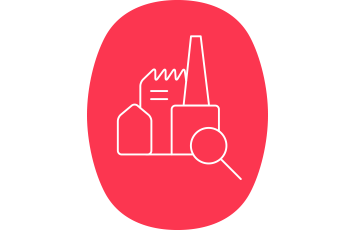Fugitive methane emissions: detecting, measuring and mitigating
The shipping industry is increasingly paying attention to fugitive methane emissions as it rallies to meet 2050 emissions targets. Methane is a much larger contributor to global warming than carbon dioxide. A potent greenhouse gas, methane is approximately 25 times more powerful than CO2 over a 100-year timescale.[1]
But what are fugitive methane emissions? The term refers to unintentional methane emissions that may occur throughout the natural gas life cycle. This can include drilling and extraction, as well as transportation via liquefied natural gas (LNG) carriers and LNG use as a marine fuel.
A challenge for LNG as a marine fuel
Fugitive methane emissions are a major concern for owners and operators of LNG-fueled ships. Indeed, LNG is predominantly composed of methane. When LNG is used as a fuel, the methane is primarily consumed in the energy conversion process. However, any unburned methane escapes from the engine into the atmosphere, resulting in fugitive emissions.
Fugitive methane emissions can occur at multiple points during the lifecycle of the LNG-fueled vessel. Upstream, methane can escape during the processing of LNG. When natural gas is processed and transported through pipelines, unwanted leaks may occur and some methane may be released into the atmosphere. For safety reasons, the gas may also need to be vented to avoid creating a hazardous environment onboard. During combustion, fugitive methane emissions may occur from passage through the piston rings or as a result of uncomplete combustion.
A major contributor to global warming
Since methane is so potent, even low fugitive methane emissions can be as harmful as high CO2 emissions levels. While LNG is emerging as a cleaner alternative fuel to reduce the shipping industry’s CO2 emissions, the issue of fugitive methane emissions must not be ignored.
Between 2012 and 2018, there was an almost 30% increase in the use of LNG as a marine fuel. If the industry continues down the path of LNG as a fuel, shipping stakeholders will need to take measures to prevent fugitive methane emissions from outweighing any environmental benefits.
Environment & Technologies Director
Bureau Veritas Marine & Offshore
Increasingly stringent regulations surrounding fugitive methane emissions are putting pressure on the industry to act. At Bureau Veritas Marine & Offshore, we are supporting our customers to understand requirements and find the right solutions. Our new notation will be a step toward an industry standard measurement of methane emissions to help address its impact on our blue planet.
The industry stance on fugitive methane emissions
There is increasing discussion within the industry about the impact of fugitive methane emissions associated with LNG as a marine fuel. Fugitive methane emissions are being considered in the draft FuelEU Maritime regulations, with potential penalties and sanctions being calculated based on coefficients that incorporate methane emissions. The IMO is also working on taking into account fugitive methane emissions in fuel life cycle assessments, with a well-to-wake approach.
Ways to address fugitive methane emissions
In order to meet pledges and regulations surrounding methane emissions, the industry needs methods to detect and measure them. With no industry standard measurement, there are different approaches to quantifying emissions.
Firstly, engine emissions can be measured when the ship is sailing. This provides a real-life environment for accurate measurements; however, these will vary depending on the speed and load of the vessel at that moment.
Alternatively, testing can be carried out under standardized laboratory conditions. On a test bench, the engine will run with a pre-defined cycle, at different Ioad levels. This way of testing offers the chance to standardize testing for different engines.
Methane slip or fugitive methane emissions?
The traditionally employed term, methane slip refers to methane that is not burned during combustion in the engine and escapes into the atmosphere. Methane slip therefore defines methane emissions released directly from a ship’s engine.
Fugitive methane emissions, on the other hand, refer to methane released at any point during LNG processing, transportation and use. This also includes unburnt methane from engines, as well as other unwanted or accidental leaks. Both types of emissions are unintentional and often hard to detect and limit.
Mitigating engine emissions
LNG engine manufacturers are undertaking research and development into new technologies and solutions to reduce fugitive methane emissions. Shipyards and manufacturers are also investigating after-treatment technologies to treat engine exhaust gases.
Providing support and peace of mind
To support fugitive methane emission measurement, Bureau Veritas Marine & Offshore is currently developing its Methane Emission Measurements (MEM) notation. The notation, to be published in July 2022, will provide a test methodology for measuring methane emissions from an engine in laboratory conditions. The objective is to offer a standardized measurement to enable methane emission comparisons between engines.
At a time of evolving regulations, Bureau Veritas Marine & Offshore is helping its customers navigate their methane emissions. We keep our customers informed of the latest updates and upcoming changes to enable them to find solutions.
[1] https://www.carbonbrief.org/explained-fugitive-methane-emissions-from-natural-gas production#:~:text=Natural%20gas%20is%20mainly%20methane,over%20a%20100%20year%20timescale.














